The Russian catering services market: beginning and progress so far achieved
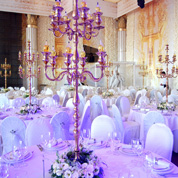
Today’s Russian catering market differs much from the market of 20 years ago, when the first catering companies started to appear in the country. Though some experts claim that even representatives of business communities in some regions have yet to really familiarize themselves with modern catering services, today, catering, however, is no longer seen as an exotic business in most parts of Russia. At least, as it was at the beginning of the 1990s, when it started establishing itself on the ruins of the demised Soviet empire as one of the new capitalist business models for post-Soviet Russia.
At that time, the appearance of catering was connected with the huge demand for professional international standard services for corporate events and private holidays. Hence, catering’s “key subject areas,” in a broader sense, include organization and servicing foods and drinks at receptions, picnics, team-building events and other corporate entertainment events. These can be a one-time event, like weddings, jubilees or daily services, such as the provision of meals to companies’ staffs in offices.
Commenting on these and other current trends in this industry, Oksana Eremenko, the CEO of the Anturaj Center catering company, noted that the industry as a whole has grown and developed by leaps and bounds since the early 1990s. “However, today, there are many nonprofessional players on our market. This is because, for some reasons, everyone that knows how to cook something, thinks he/she can open a catering or restaurant business. Therefore, this market is ambivalent today, as it is full of both highly professional and nonprofessional players.” (see this expert’s full interview in the Expert’s Corner rubric).
One of the main advantages of catering, in comparison with classical restaurants, according to Tamara Reshetnikova, the CEO of Growth Technologies, a market research firm with extensive coverage of the Russian eatery services market, is its scalability and replication of business processes. Other advantages include lower production costs, which as a consequence leads to much lower prices for services.
Another advantage is flexibility, as catering companies can organize events for thousands of guests as well as for small family parties. One more feature is that demand is highly characterized by ‘strongly marked seasonality,’ a reality that is always taken into consideration by both customers and service providers. For instance, the industry’s so-called ‘peak business periods’ as a rule, account for up to 25-30% of most companies’ annual sales.
“In terms of physical size and annual turnover, today’s Russian catering market compares favorably with similar markets in Central Europe, but still very much lags far behind top EU countries.”
One more advantage of catering, from the point of view of chartering new businesses, is in its relatively low initial investment outlay. For instance, at the initial stage, one only needs about have $50,000-$100,000 to acquire the required equipment, rent premises, salary fund, etc. Sometimes even less is needed when a part of the work, for example, the cooking, is done by the ‘newly minted entrepreneur’ in his own apartment, with relatives taking an active part in running the family business.
There are several business growth driving factors in the industry. These include the growing prosperity of companies and individuals, increased business activities, as well as accelerated lifestyle regimes, ongoing changes in Russians’ mentality with marked orientation towards Western-styles consumer behavioral patterns, which includes a more rational use of time.
Characterizing the Russian catering industry, Anastasia Ptukha, the board chairperson of Step by Step Group, a market research agency, noted that the Moscow and St. Petersburg market segments have almost fully recovered from the economic crisis. “The growth rate has also increased across the industry, hovering at the moment at about 7-10%. The most expensive events, however, are still held in Moscow and St. Petersburg.” (see the Market growth rates over the past three years).
This stems from the fact that the catering market is most developed in Moscow and St. Petersburg, while the so-called ‘million resident cities’ that serve as the regional admini strations’ political capitals or their economic centers, where the main industrial power is concentrated, are at far-placed second position.
Commenting on these trends, Alexander Burian, managing partner at the ChanteCler catering company, also noted the market’s rapid growth rates over the past several years, not only in Moscow, but also in the regions. “Today, there are clear leaders on this market that specialize in off-premises service and developing in different areas,” he added. “Companies also try to segment the market among themselves, differentiating themselves from one another or specializing exclusively in large-scale events. (see this expert’s full interview in the Expert’s Corner rubric).
At the moment, catering has become an integral part of many business processes, especially in big cities. This is confirmed by lots of a
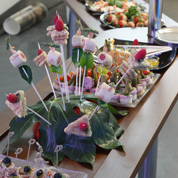
nalytical data, which say up 90% of orders usually come from corporate customers and event management agencies. One of the industry’s development features is that there are now specialized internet-portals, devoted solely to the subject of catering. One of these is CateringConsulting.ru, the first professional site in Russia and CIS devoted to the catering industry, tracking events in the industry, and offering a platform for the market participants to exc hange ideas and opinions. There are also annual specialized industrial events, such as the Catering Director Business Forum and the Catering Expo.
There is even an annual awards ceremony for handing the industry ‘Oscar statuettes’ to outstanding companies. The first phase of this event, the Annual Russian Professional Caterers Award Ceremony, took place last year, when the most worthy representatives of the industry won different prices in different nominations (see Russia’s Best Catering Companies). Besides, with each passing year, the subject of catering is becoming more and more interesting for business journals, such as The Russia Corporate World, a business magazine, which regularly publishes reviews of this market, including this edition in your hand.
Commenting on the progress so far achieved by this Russian market, Kirill Pogodin, the director of CateringConsulting.ru, noted, as a comparative analysis, that in terms of overall level of development, annual turnover size, etc., the Russian catering market compares favorably with similar markets in Central and Eastern Europe. “However, it still very much lags far behind top EU countries, such as Germany, France and the Great Britain.
Potential of the Russian segment at the world catering market
Catering has grown to occupy a definite niche in the global economy as an integral element of all key events attended by world business and political elite. Experts’ most conservative estimations put the volume of this market at about $100bln. More precise data are, for obvious reasons, very hard to come, partly due to the sheer size of this industry, opacity and marked immaturity of some national markets.
However, the size of the “true, but yet to be potential capacity” of the Russian market, according to several expert analytical companies, including the Discovery Research Group and Trans-regional Marketing Centers System, has been estimated at $10bln. About a half, or approximately $4bln-$5bln of this sum is attributable to Moscow, which underlines the Russia capital’s “absolute hegemony” on this market, and consequently, its “astounding attractiveness” for the industry’s biggest players.
 Lidia Varlamova — the CEO of Dellos Catering: “Our business growth strategy envisages an active expansion, but this will be achieved via increasing our ‘basket of proposals’ in the market’s premium segment.”
Lidia Varlamova — the CEO of Dellos Catering: “Our business growth strategy envisages an active expansion, but this will be achieved via increasing our ‘basket of proposals’ in the market’s premium segment.”
Then, about a quarter of this potential is attributable to St. Petersburg, which also makes Russia’s “northern capital” “an attractive harbor” for locating catering businesses, a factor also used by the industry leaders, who consider an expansion to this city on the Neva a natural logical extension of their business development strategies from their bases in the capital. The rest is distributed among the other Russia mega-cities. (See Regional structure of the Russian market diagram).
Actual size of the today’s Russian market
According to Rosstat, the Russian official statistics agency, there are currently over 50,000 food services companies in the country with a gross revenue turnover of RUR903,3bln in 2011. Traditional restaurants and cafes, in terms of number, account for about 90% of this market, while catering companies makes up about 10%. However, the latter’s share, in monetary terms, is much higher, according to Growth Technologies’ data. (see Dynamics and Growth Rates of the Russian Catering Market).
However, in practice, the market’s annual total turnover is very modest, standing at $600-750mln, according to different data. For example, Research Techart assesses it at about RUR18bln (about $600mln), and Growth “Technologies estimates the volume of the corporate catering segment at RUR100-110bln. Moscow accounts for almost 20%, or about RUR17-20bln, market domination attributable to the high concentration of businesses, including foreign ones, business-centers and a large number of catering companies (see the Russian Market’s Annual Turnover Figures, in mln USD).
Like the global industry, the market’s exact size also defies precise calculus because of their unprecedented geographic scale; after all, the country occupies almost 1/6th of the world's land area, uneven development of catering services across the country and glaring immaturity of the market in some far-flung regions.
Commenting on the lack precise data and widespread opacity of operations in this industry, Victoria Polovnikova, the director of Mega Catering, noted the industry’s players’ traditional habit of keeping their financial data ‘close to their hearts.’ “Unfortunately, the financial indicators of this industry as a whole are rather vague, a practice that stems from the fact that that catering companies usually keep their annual turnover secret.” (see this expert’s full interview in the Expert’s Corner rubric).
 Victoria Polovnikova, the director of Mega Catering: “Last year, our company got a diploma in the “Best Service Price-to-Quality Ratio Nomination within the Catering of the Year ceremony, the first-ever National Professional Caterers Award in Russia.”
Victoria Polovnikova, the director of Mega Catering: “Last year, our company got a diploma in the “Best Service Price-to-Quality Ratio Nomination within the Catering of the Year ceremony, the first-ever National Professional Caterers Award in Russia.”
According to different experts data, about 60% Moscow and St. Petersburg companies use catering services, and about one third of com
panies provide their staffs with meals in-house, whilst almost a quarter of companies current do not provide their staffs with launches. This means that such employees go out for launch or bring their food with them.
Another interesting finding is that only 15% of companies’ staffs eat meals prepared by professional caterers, whilst almost half of them, or about 46.6 %, of such employees are not satisfied by the services they receive. Some of the reasons for this dissatisfaction include monotonous menus, quality degradation, etc. Such trends mean “an untapped field” for catering companies to expand or consolidate their positions in the industry.
Main types of catering services
To cover all the aspects of catering, service providers specialize in three priority segments: off-premises services, or so-called event catering, stationary service and so-called “air catering,” or the provision of food on airlines. However, the most profitable among these is off-premises service.
According to the Discovery Research Group’s data, the profitability of this service hovers around 25-30%, but for some players it even goes up to 75%. A similar index is much lower in the office meals delivery segment, standing at about 10-15%. According to experts’ data, the prices services in the Moscow market premium segment rarely fall below $250 per person, similar services in restaurants attract a check of $50-80, in business centers about $5-7, in private companies about $4-5, while it is rarely above $3 in most state institutions.
According to Growth “Technologies’ data, the main part of the office catering market, the so-called ‘white catering,’ is concentrated mostly in Moscow, whilst the lion’s share of industrial catering, so-called ‘blue catering’ is concentrated in industrially developed regions. In addition, the latter has a much bigger potential for development (see the Structure of the Russian Food Services Market, by type of institution). Commenting on this trend, Yevgenia Parmukhina, director of Research Techart, said the so-called “business segment” is growing at the highest rate, whilst the so-called “social ca
tering” currently has the lowest growth rates.
This reality explains why professional catering services are having difficulties find their ways to state institutions. For example, only last year the Russian Army hired catering services for the first time in its history. The result is that today several catering firms are serving military units. However, despite this success, the rest of state institutions are still closed to catering.
Besides the traditional institutional restrictions, the state sector on its own is not very attractive for catering due to the low service tariff that the government 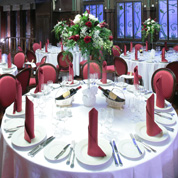 agencies are ready to. For example, the state allocates less than 100 rubles per person a day, and to make business profitable in this segment, a minimum of at least 150-200 rubles per person is needed per day, experts noted.
agencies are ready to. For example, the state allocates less than 100 rubles per person a day, and to make business profitable in this segment, a minimum of at least 150-200 rubles per person is needed per day, experts noted.
New areas for business expansion
One of the new areas of catering service expansion today is high school graduation parties as the number of school graduation ceremonies being served by catering is increasing ever year. For instance, if in 2007, only 15% of high schools used catering, this number increased to 42% in 2011 and over 65% in 2012.
According to experts’ data, today, this sphere is generating between RUR500mln and RUR750mln for catering and event-companies. However, experts have called these figure “most conservative data,” noting that a more realistic estimate would be over a billion US dollars, if the price tags of so-called “super-expensive graduation parties” organized by the oligarchs’ children, usually denominated in 6- and 7-digits are tallied up.
The billion ruble revenue includes the graduation expenses of only a part of the so-called “gilded golden youth” that has for reasons opted celebrate this special date in Russia, rather than at their parents’ “foreign cottages” on the Cote d’Azur, Swiss Alps, or in the Billionaire Bar in Sardinia near the exclu
sive estate of the former Italian Prime Minister Silvio Berlusconi, or other entertainment facilities for extremely wealthy people.
The costs of events organized by this category of Russians at owned or rented yachts, private castles, etc., where the price of only one bottle of elite Champagne starts from a thousand euros, often defy mathematical calculus. For instance, the average budget of such “super-parties”, as one Moscow elite corporate event management executive delicately noted, is quite comparable to the annual budget of a medium-sized town in central Russia. The task of top market catering companies is to allure this category of deep-pocketed customers to celebrate their events in Russia.
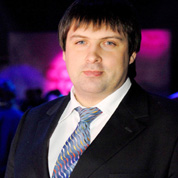 Alexander Burian, the managing partner of catering company ChanteCler: “Our success on this market is the result of our everyday’s work. Of course, it consists of different factors, but I would particularly like to note our work team for this success.”
Alexander Burian, the managing partner of catering company ChanteCler: “Our success on this market is the result of our everyday’s work. Of course, it consists of different factors, but I would particularly like to note our work team for this success.”
Similarly, there is an activation of air catering development in industry already dominated by such brands as Aeropir, Aeromar, Aerofood, Transpit, Domodedovo Air Service and Vnukovo Restaurants. A unique feature of this segment is absence or minimum competition due to the mono- or oligopolistic nature and the “high level of personification” of business services between companies and their main customers, which practically exclude the appearance of new players without the ‘right connections with the right people’ in and outside industry.
This probably explains while, Dellos Air Service, a subsidiary of the famous Maison Dellos Holding, became a major newsmaker this spring, when it announced its entrance into this “elitist market segment” to serve business aviation flights between Russia and the United States. The potential of this market segment is very huge, with the monthly market turnover averaging about RUR45mln, according to the Dellos Air Service’s assessment.
Lidia Varlamova, the CEO of Dellos Catering, commenting on her company’s affairs, noted the rebranding process that has changed the corporate name to Dellos Catering. “Today, our catering has become a separate area. Our catering concept is much broader that of a single restaurant. Dellos is now a truly international brand. In March, a Dellos restaurant was opened in New York, with London and Paris next in line (see the interview of Dellos Catering CEO in the Expert’s Corner rubric).
This view is shared by the key players in the market, who have said that the potential of this segment has not been fully mastered, and is therefore very promising. This is especially true, taking into consideration the expected openings of a new terminal at Sheremetyevo and several other airports throughout Russia to service the Winter Olympics-2014 in Sochi, the World Cup in 2018 and other events of international scales scheduled to take place in the country over the next decade. All these positive developments will opens up more business opportunities for catering companies.
Competition in capital cities at “cutthroat” level
Today, players on the catering market, like in other economic sectors, are facing tough competition. To attract new and retain old clients, they undertake a series of marketing measures. The key elements of the ongoing battle for clients’ “mouths,” rather their “wallets,” are visible everywhere in the industry, from external designs and decorations of events, the halls, waiters’ uniforms to musical accompaniment. Besides, companies often have to vary their menus by introducing so-called “cyclic dishes” as a means of preventing the so-called “catering fatigue” that usually results from a long-term monotonous menu.
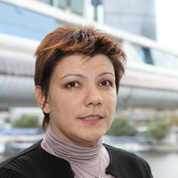 Oksana Eremenko, the CEO of the Anturaj-Center: “Indeed, the most important thing in our business is the human factor and personnel management capability.”
Oksana Eremenko, the CEO of the Anturaj-Center: “Indeed, the most important thing in our business is the human factor and personnel management capability.”
However, the general competition trend is towards reduction of prices that started at the end of 2008 and still continues till date. This trend, according to Reshetnikova, stems from the fact that catering services providers are ready to serve clients’ economy-budgeted events because their main aim today is to have customers at all costs. This negative trend, in tandem with the ever growing competition in the industry, and especially in major capital cities, has led to a noticeable decrease in profitability.
Under such circumstances, some companies that are unable to cope with competition often have to exit the market or change their specialties. “Annually about 10 new companies enter the market, and about the same amount also exit, being unable to withstand the cutthroat competition or due to the sustainability and profitability of their business models”, Research Techart’s Parmukhina noted. She attributed this tendency to the fact that market competition has significantly increased over the last five years, fueled by “price competition bordering on price wars” and reduced profitability.
However, some catering services providers, on the contrary, are mounting an aggressive struggle against competitors to survive, using all available means, including price dumping strategies. The negative side is that these companies often become the victims of these price dumping strategies, when top industry players accept such challenges. Others very often develop parallel businesses that enable them to reduce expenses on raw materials, and also to compensate decrease in profitability in one business with robust operations in the other ventures.
In addition to competition with “peers,” caterers’ lives are also complicated by the traditional restaurants that are actively catering as additional services. This is very profitable for traditional restaurants as such a diversification of business also allows them to minimize risks and expenses. Apart from restaurants, catering also faces strong competition from hotels, especially the five-star facilities. Their main ‘competitive trump card’ is the opportunity to offer all MICE services in one package with big discounts, subject to holding such events in their premises, a policy that usually works wonders. It is one thing to organize a corporate event in some cultural centers, but it is quite another class if the same event is held at a five-star hotel.
Commenting on all these and other trends, Anna Krasavtseva, an analyst from Business Port, an investment firm, noted the ongoing consolidation of the Russian catering market that resulted from the crisis. “Today’s market has become more consolidated, as many players under the influence of the consequences of crises had to annul their halls lease agreements, or even exited the market as a whole,” she added. “On the other hand, many restaurants that have introduced catering as a part of their anticriss strategies plan to retain it as a constant supplementary service or even fully focus on it as the main business venture. This is because catering is cheaper to run, as it does not require renting a permanent space, while overall head costs are also much lower.”
Key problems in the industry
The industry has lots of problems, from bureaucratic hurdles to frequent staff turnovers, lack of development in urban infrastructure to huge traffic jams that 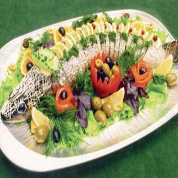 complicate order delivery logistics. In this regard, the most costly expenditure, especially for small companies, is transport and logistics for timely orders deliveries, industry experts said.
complicate order delivery logistics. In this regard, the most costly expenditure, especially for small companies, is transport and logistics for timely orders deliveries, industry experts said.
Thus, commenting on frequent staff turnovers issue, the Anturaj Center’s Eremenko said it is vital to note that the most important things in catering business are human factor and personnel management capability. “There are employees that had left us to work somewhere, and then later came back. Usually, I don’t take back all such employees, but those that are rehired, have always remained with us, becoming more dedicated to their jobs and our company.”
At times, logistics is so complicated that some catering companies, especially smaller ones, often have to refuse orders, other experts noted. Another common problem is corporate clients’ inconstancy as they sometimes suddenly annul existing contracts without any cogent reasons, stop subsidizing the employees’ meals or adopt some other forms of compensation for employees’ meal expenses.
Experts recommend market participants to resort to a full-scale diversification of their businesses and put main focus on such promising areas as airline and railway catering services. In other words, diversification should target the provision of related services that can be performed using the companies’ existing production resources.
All these trends are expected to fast-track the ongoing active development of catering services in Russia. The latent potential, and hence, profitable future prospects of this market is evident in the fact that only 30% of all Russian companies currently outsource organization of corporate events and staff-feeding services to professional caterers or event managers. This is infinitesimally small, compared to similar indices in more developed countries, for example, in the United States, which currently hover around 90%.
This means a huge, but yet-to-be tapped potential of the Russian catering industry. Consequently, this opens up a “big business operations field” for companies, which means a really bright future for the industry’s top and serious leaders with realistic business offers for clients in this segment of the Russian economy.


 Lidia Varlamova — the CEO of Dellos Catering: “Our business growth strategy envisages an active expansion, but this will be achieved via increasing our ‘basket of proposals’ in the market’s premium segment.”
Lidia Varlamova — the CEO of Dellos Catering: “Our business growth strategy envisages an active expansion, but this will be achieved via increasing our ‘basket of proposals’ in the market’s premium segment.” Victoria Polovnikova, the director of Mega Catering: “Last year, our company got a diploma in the “Best Service Price-to-Quality Ratio Nomination within the Catering of the Year ceremony, the first-ever National Professional Caterers Award in Russia.”
Victoria Polovnikova, the director of Mega Catering: “Last year, our company got a diploma in the “Best Service Price-to-Quality Ratio Nomination within the Catering of the Year ceremony, the first-ever National Professional Caterers Award in Russia.” agencies are ready to. For example, the state allocates less than 100 rubles per person a day, and to make business profitable in this segment, a minimum of at least 150-200 rubles per person is needed per day, experts noted.
agencies are ready to. For example, the state allocates less than 100 rubles per person a day, and to make business profitable in this segment, a minimum of at least 150-200 rubles per person is needed per day, experts noted. Alexander Burian, the managing partner of catering company ChanteCler: “Our success on this market is the result of our everyday’s work. Of course, it consists of different factors, but I would particularly like to note our work team for this success.”
Alexander Burian, the managing partner of catering company ChanteCler: “Our success on this market is the result of our everyday’s work. Of course, it consists of different factors, but I would particularly like to note our work team for this success.” Oksana Eremenko, the CEO of the Anturaj-Center: “Indeed, the most important thing in our business is the human factor and personnel management capability.”
Oksana Eremenko, the CEO of the Anturaj-Center: “Indeed, the most important thing in our business is the human factor and personnel management capability.”  complicate order delivery logistics. In this regard, the most costly expenditure, especially for small companies, is transport and logistics for timely orders deliveries, industry experts said.
complicate order delivery logistics. In this regard, the most costly expenditure, especially for small companies, is transport and logistics for timely orders deliveries, industry experts said. 





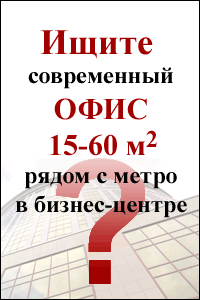


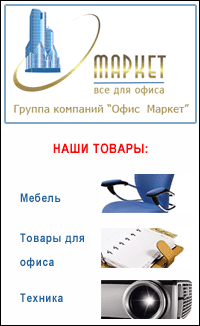
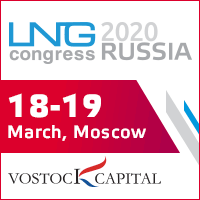
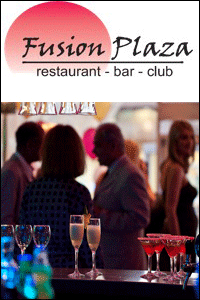
 Web design,
Web design,